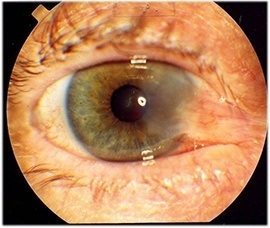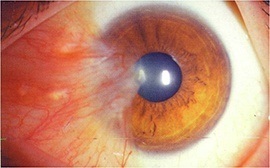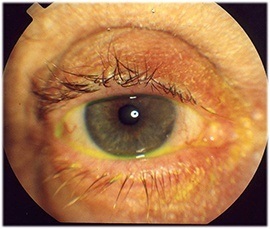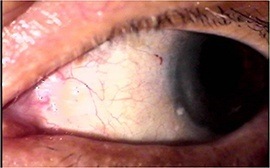Pterygium Surgery

Pterygium is one of the eye conditions that refer to a benign or non-cancerous growth of the conjunctiva, a clear, thin tissue that covers the white part of the eye (sclera). Pterygium may occur in one or both eyes.
The cause of pterygium eye disease is not known, but can occur more often in people who spend time outdoors with frequent or excess exposure to sunlight or wind. People who spend considerable time in the sun such as farmers, fishermen and people living near the equator are more likely to have pterygium.
The pterygium is a painless area of elevated tissue with blood vessels on the inner or outer border of the cornea. The condition can cause extreme eye discomfort including, burning, irritation, redness, tearing, foreign body sensation and astigmatism (visual defect). If the growth becomes large enough, it may begin to inhibit vision.
Pterygium can be diagnosed by your ophthalmologist by performing a complete examination of the eye and eyelids.
Treatment depends on the size and extent of the pterygium. Treatment is usually not required in case of mild pterygium. In cases in which the growth is unsightly or vision is threatened, your ophthalmologist may recommend surgical removal of the tissue.
The patient requires preoperative counselling to inform that although the surgery is successful, the symptoms may not be completely relieved and recurrence is common and they tend to spread quickly after recurring.
The most common surgical technique used today involves simple excision of the pterygium combined with conjunctival auto-grafting. During the procedure, the pterygium is removed and the gap in the conjunctiva left by the removal of the pterygium is filled with a tissue transplant from the upper eyelid. The graft is held in place either with sutures or fibrin sealant or glues. This graft covers the bare area and acts as a barrier to recurrence.
An innovative and latest advance in pterygium surgery is “No-stitch Pterygium Surgery”. This procedure is similar to transplantation surgery however no stitches are used to hold the autograft in place instead the modern tissue adhesives made of clotting proteins found in human blood are used. The adhesive dissolve in a week with no residues and helps in faster recovery. No serious blood borne infections have been reported with use of adhesives and this method is considered to be safe.








